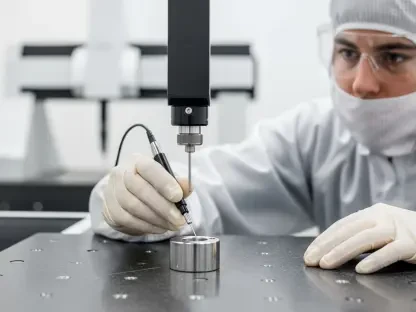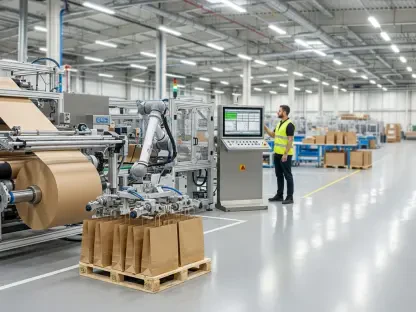Cell therapy has emerged as a revolutionary approach to tackle various medical conditions by leveraging advanced therapeutic medical products (ATMPs). With scientific developments paving the way for more therapies entering the market, ensuring these treatments are accessible requires strategic focus on managing costs during the manufacturing process. Harvey Branton of eXmoor Pharma highlights the importance of making informed early process choices which can significantly impact the commercial viability of cell therapies.
The Necessity of Cost Management
As the field of ATMPs progresses, the cost associated with their production becomes a vital point of consideration. Unlike conventional biomanufacturing, where costs can be reduced through process optimization and scaling up, cell therapy requires a different strategy. This is especially true for autologous therapies where each batch is unique to an individual patient. The uniqueness of each batch presents challenges in achieving economies of scale common in more traditional manufacturing processes.
To support the wide-scale commercial success of autologous therapies, it is crucial to adapt manufacturing processes to handle thousands of personalized batches annually. This demand makes it paramount to adopt innovative strategies that ensure operational efficiency and cost-effectiveness. As the production volumes increase, maintaining cost-efficient processes while ensuring the high quality of each batch remains a significant challenge that the industry must address.
Process Design and Parallel Manufacturing
A well-structured process design is fundamental in enhancing the efficiency of cell therapy manufacturing. Parallel manufacturing emerges as a vital strategy to amplify batch throughput and optimize the utilization of resources. By enabling the production of multiple batches simultaneously, parallel manufacturing can significantly drive down the costs of individual batches. This approach helps leverage available resources and exploit the manufacturing capacity fully, mitigating issues related to production bottlenecks.
Attention and care in process design contribute to robust performance consistency. While yield is often perceived as a primary cost driver, more emphasis should be placed on early, impactful process design decisions that can preemptively mitigate future cost burdens at commercial scales. Incorporating scalable and flexible design elements early on can prevent costly reconfigurations and disruptions during large-scale production.
Effective process design also requires continuous evaluation and iterative improvements to adapt to changing demands and technological advancements. Ensuring that the design can handle potential scale-ups and adjustments without significant downtime or cost surges is vital for sustaining long-term commercial success. This proactive approach also facilitates smoother transitions from clinical to commercial manufacturing phases.
Key Areas of Focus: Efficiency and Technology
Two pivotal areas demand focus to improve cell therapy manufacturing processes: designing for manufacturing efficiency and employing advanced technological solutions. Automation, machine learning (ML), and artificial intelligence (AI) promise substantial enhancements in productivity, but their successful implementation requires foresight. These technologies can streamline complex processes, reduce labor demands, and enhance overall production efficiency.
Integrating automation into the manufacturing workflow can significantly drive productivity while minimizing human error. Advanced automation systems can handle repetitive and intricate tasks with high precision, allowing skilled labor to focus on more strategic functions. Early incorporation of these technologies can prevent costly adjustments during late-stage manufacturing, ensuring smoother scaling and consistent quality.
ML and AI can also play transformative roles by enabling dynamic monitoring and adaptive control mechanisms. These technologies help achieve consistency in quality and allow for proactive adjustments to the process. Predictive analytics, driven by historical data, can forecast process outcomes and refine control strategies automatically. This capability ensures optimal performance and helps preempt potential issues before they impact production.
Process Design for High Throughput
Processes should be inherently adaptable to accommodate a continuous operational schedule. This adaptability extends beyond the traditional 8-hour workday to maximize manufacturing capacity. Implementing efficient shift structures and optimizing night shifts can prevent underutilization and lower overhead costs. The aim should be to maintain a consistent operational tempo that leverages every available hour for productive output, thereby enhancing overall throughput.
Consistency in batch processing is fundamental. Maintaining a detailed and reliable manufacturing schedule can augment throughput while reducing the risk of errors. This hinges on the regular availability of starting materials and the ability to maintain a stable, predictable workflow. Regularly scheduled processes ensure that production runs smoothly, and any deviations can be quickly identified and corrected.
Developing processes around unit operations completed within a single shift can also enhance efficiency. This method negates the need for transferring partly completed tasks to subsequent shifts, thereby reducing complexity and potential errors. While some flexibility may be necessary to accommodate varying product requirements, general strategies such as starting batches during the day and completing them overnight for next-day review can standardize manufacturing processes.
Embracing Automation and AI
The substantial data generated from manufacturing autologous cell therapies provides a fertile ground for leveraging ML and AI. These technologies can be harnessed to achieve dynamic monitoring and adaptive control mechanisms. This not only ensures consistency in quality but also allows for proactive adjustments to the process. Effective data utilization helps create a feedback loop where insights from past batches drive improvements in future production runs.
AI’s predictive capabilities can utilize historical data to forecast process outcomes and optimize control strategies. Automation in cell therapy manufacturing introduces efficiency and cost savings, making it a feasible approach to manage the complex and high-demand production landscape. Incorporating cloud-based solutions for data management and machine learning model updates further enhances these capabilities.
AI models offer potential for real-time batch monitoring, adjusting control strategies to achieve desired outcomes. They can predict future process performance based on historical data and make informed decisions for optimal control. Though accelerating cell-based processes poses challenges, adjusting conditions can slow down or speed up processes as required, stabilizing process timings and enabling efficient scheduling.
Benefits of Advanced Image Analysis
AI’s application in image analysis offers transformative insights into cell growth and morphology, aiding in the development of precise control strategies. The ability to rapidly analyze and interpret these images provides significant value, further enhancing manufacturing outcomes. Real-time image analysis supports better decision-making and allows for quick adjustments to maintain the integrity and quality of each batch produced.
Data ownership and governance become crucial as multiple stakeholders are involved in the process. Properly navigating these concerns ensures clarity in intellectual property and maximizes the utility of generated data. Establishing clear guidelines and agreements regarding data ownership helps mitigate potential conflicts and fosters a more collaborative environment.
Given the extensive data produced and computational power required for model updates, cloud-based solutions will likely rise in prominence. These platforms not only support efficient data management but also enable sophisticated computational tasks necessary for continuous improvement in process monitoring and control. This approach ensures scalability and adaptability, crucial elements for sustaining large-scale production.
Conclusion
Cell therapy has emerged as a groundbreaking approach to address various medical conditions by using advanced therapeutic medical products (ATMPs). Scientific advancements have paved the way for an increasing number of these therapies to enter the market. However, ensuring their accessibility requires a strategic focus on cost management during the manufacturing process. According to Harvey Branton of eXmoor Pharma, it’s crucial to make informed early process decisions that can significantly affect the commercial success of cell therapies. These decisions are vital because they influence not only the cost but also the scalability and quality of the treatments. As the field grows, balancing innovation with practical considerations will be key to making these therapies available to a broader patient population. Therefore, attention to both scientific and economic factors becomes essential in the development and distribution of effective cell-based treatments.









